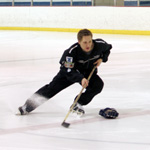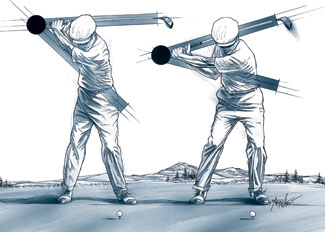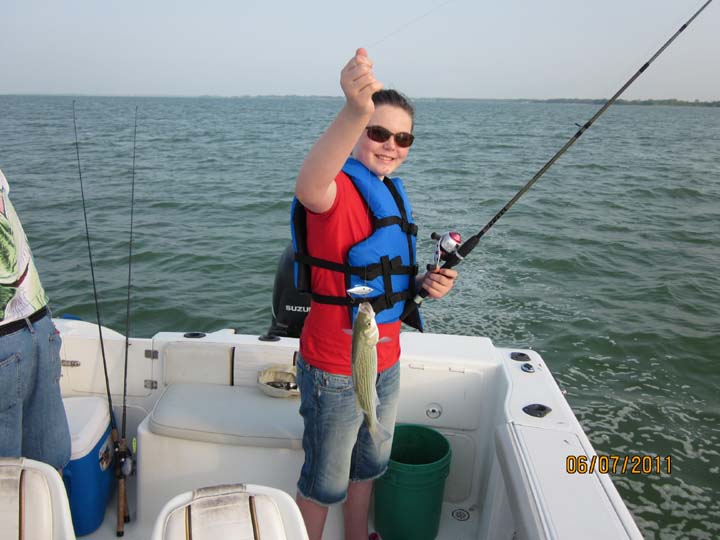Every skate blade has an inside and outside edge and a groove between the edges, called the "flat" of the blade.
The sole function of the flat of the blade is to glide straight forward and straight backward. To be on the flat you must stand so that the skate is upright (blade perpendicular to the ice). You will be gliding equally on both edges and in a straight line.
Edges have multiple functions.
The pushing skate is the one that must grip the ice to set up a powerful push. The gliding (directional) skate is the one that must be on a strong edge so that you can travel tight curves. These two functions are totally separate and distinct from one another. One skate digs in to push while the other digs in to travel a curve or circle.
Before making the edges work to your best advantage you must first know what is, and then how to get onto, a functional edge.
A functional edge means that the edge engaging the ice forms a 45 degree angle to the ice. Regardless of whether you're using the inside or outside edge, or skating forward or backward, edges (on both the pushing skate and curving skate) must be leaned so that the boots and blades and ankles and knees form this angle.

Remember - one skate (i.e. left) digs in to push while the other skate (i.e. right) digs in to travel a curve or circle. It's extremely important to learn first how to and then practice the art of leaning your skates, ankles and knees while maintaining excellent balance. You may take several falls in the process of mastering this, so be sure to wear your protective hockey gear.
When you master the edges you'll be amazed at how much faster you'll skate and how much more secure you'll be on the ice.



Copyright © www.mycheapnfljerseys.com Outdoor sports All Rights Reserved